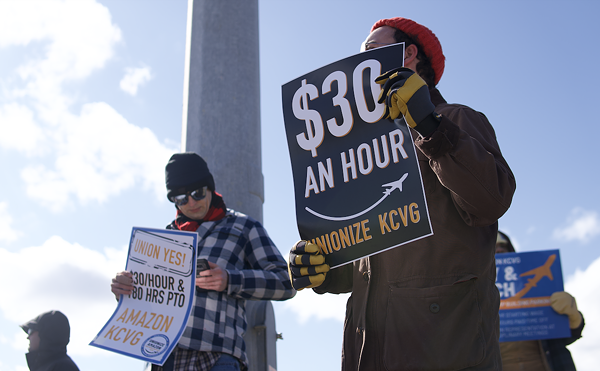For the last eight years, Ohio’s state-level political landscape has been dominated by Republicans, including Gov. John Kasich. But that could change in November.
Richard Cordray, former head of the Consumer Financial Protection Bureau, has teamed up with running mate former U.S. Rep. Betty Sutton to face off against current Ohio Attorney General Mike DeWine and his running mate, Ohio Secretary of State Jon Husted.
Polling shows the two neck and neck — somewhat surprising, given how established DeWine and Husted are politically and the trouncing Republican Kasich handed his Democratic opponent Ed FitzGerald in 2014.
This contest was never going to be about charisma: owlish DeWine is a textbook career politician, having served two terms the Ohio Senate, four terms in the U.S. House, two in the U.S. Senate and a three-year stint as Lt. Governor under George Voinovich.
Cordray, meanwhile, has taken a winding route through private law practice and public office. The former Marshall Scholar clerked for the U.S. Court of Appeals in Washington, D.C. before serving a term in the Ohio House of Representatives. Campaigns for U.S. House, Ohio Attorney General and the U.S. Senate followed. Eventually, Cordray won election to be Ohio Treasurer in 2006, and then Ohio Attorney General in 2008.
During Cordray’s gubernatorial campaign, he has been keen on making oddly contemplative observations on Twitter and rather staid campaign appearances. He rocks what you might call a semi-bowlcut. Add to this that neither DeWine nor Cordray are noted public speakers and you have a recipe for a snoozer.
Rockstars they are not. And yet, there is plenty of heat in the race between the two. A bit of that comes because the campaign is something of a rematch: DeWine toppled Cordray from his perch as Ohio Attorney General in 2010. Most of it, however, is likely the result of the fact the two are vying for the top executive office in Ohio in an incredibly polarized political atmosphere.
The national political tensions that have grown during the Trump administration are on full display in the campaigns.
The two have debated most heavily on health care — still a hot-button national issue. Cordray wants to preserve Ohio’s Medicaid expansion and has hit DeWine with charges that he would strip Ohioans of the healthcare offered by the ACA, especially its provision protecting those with pre-existing conditions. DeWine, meanwhile, has a murky stance on the issue: as attorney general, he brought Ohio into a lawsuit against the Obama administration fighting the Affordable Care Act. But he also says he wouldn’t end Ohio’s expansion or the ACA’s protections for preexisting conditions.
DeWine has taken a hard-right tack during his attorney general stint by taking on Planned Parenthood and suffering several losses in federal court. Most recently, he tried defending a state law that sought to defund Planned Parenthood over its provision of abortions (the organization receives some state funds for health screenings not related to abortion). An appellate court ruled in April that the law is unconstitutional.
The battles likely won’t change many peoples’ minds — pro-life advocates will see DeWine’s court fights as worthy efforts and pro-choice voters will see them as confirmation of DeWine’s ideological stance — but they do illuminate the degree to which DeWine differs from Cordray, whom Planned Parenthood endorsed in May.
Another issue, however, may be more decisive for some voters choosing between DeWine and Cordray: the scandal involving the Electronic Classroom of Tomorrow, which closed earlier this year after the Ohio Department of Education ordered it to pay back millions in taxpayer funds paid to the online charter while it was flubbing attendance numbers. Audits showed irregularities in ECOT’s record-keeping as far back as 2001.
ECOT founder Bill Lager and others at the charter have donated more than $2 million to candidates — almost all of them Republican. That includes money to both DeWine and Husted, though DeWine later donated that money to charity. While donations to DeWine and Husted numbered in the tens of thousands of dollars, Cordray also received small donations of a few hundred dollars. He donated those to education groups.
DeWine’s critics say that he should have acted quicker to bust ECOT as it was taking in millions for students it didn’t educate. DeWine didn’t take action until well after ECOT’s troubles were well-established, though he did file legal action seeking recovery of millions from Lager and others this year. DeWine has countered his critics by saying his role as attorney general was limited and that he took action when he could. Others have found that claim dubious, but say DeWine isn’t the only one to blame.
“The warning signs about ECOT had been documented in news articles for many years, and yet the state government as a whole was slow to act,” fact-checking site politifact.com wrote this year in rating claims made against DeWine by union AFSCME “half true.”
Cordray has skated through the campaign relatively gaffe-free, but one issue could hurt him with the moderate voters he’ll need to win the election: Issue 1, an attempt to reform Ohio’s drug possession laws (see below).
Cordray says he “wholeheartedly” supports Issue 1 because it rolls together several worthy aims — reducing taxpayer expenditures on incarceration, increasing chances for inmates to gain rehabilitation and combating Ohio’s opiate epidemic.
DeWine’s campaign has hammered Cordray over his support for the initiative, saying that Issue 1 would lead to reduced charges and no jail time for fentanyl traffickers. The amendment’s language makes clear that prosecutors can still charge those caught with drugs like fentanyl with trafficking, however, and that only penalties for possession would be changed by the new rules.
Meanwhile, Green Party candidate Constance Gadell-Newton and Libertarian Travis Irvine have pushed to be heard in the race, having been left out of three gubernatorial debates. The Ohio Libertarian Party has filed a lawsuit over those omissions.
Gadell-Newton, an attorney, has campaigned on a platform that includes expanding civil liberties, protecting Ohio’s environment, opposing hydraulic fracturing in the state, criminal justice reform, marijuana legalization and other progressive issues.
The Green Party in Ohio is small compared to the major parties — just over 4,300 people voted in its primary this year, compared to 875,000 Republicans and 730,000 Democrats, though the party says its membership is growing. But Gadell-Newton’s candidacy isn’t just about a long-shot chance at the governor’s office: it’s also about the party’s continued visibility in statewide elections. If Gadell-Newton doesn’t get 3 percent of the vote in November, the Green Party will lose its status as a recognized party and its candidates will appear on the ballot as independents.
Irvine has campaigned on an interesting mix of stances: He’s pro-Issue 1 and pro marijuana legalization, which could win him attention from liberals. But he’s also big on gun rights and tax reform that lightens the burden small businesses bear — issues near and dear to conservatives’ hearts.
You can watch DeWine and Cordray's first debate here, their second debate here and their third debate here.






